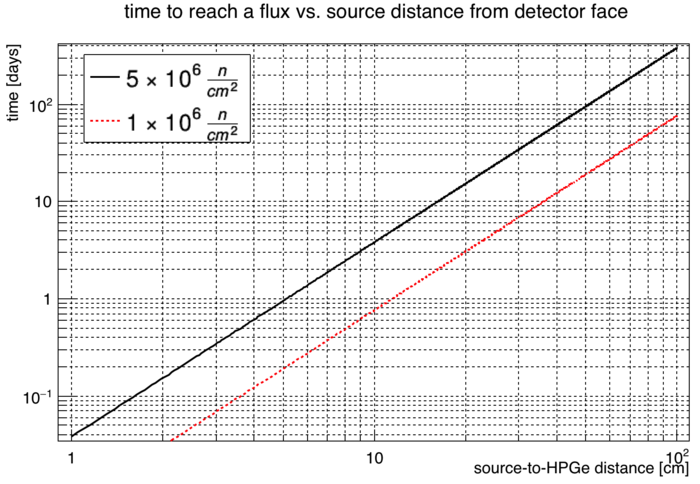Difference between revisions of "Fast neutron damage to HPGe Detector"
| Line 1: | Line 1: | ||
| + | [[]] | ||
| + | |||
| + | [[12-23-2016]] | ||
| + | |||
An observable decrease in the energy resolution of large HPGe detectors was first seen after the irradiation of 5*10^7 n/cm^2<ref>P. H. Stelson, J. K. Dickens, S. Raman, and R. C. Trammell, “Deterioration of Large Ge(Li) Diodes Caused by Fast Neutrons,” Nuclear Instruments and Methods 98,481 (1972).</ref>. I choose a factor of ten below that value to be the maximum allowable neutron irradiation. | An observable decrease in the energy resolution of large HPGe detectors was first seen after the irradiation of 5*10^7 n/cm^2<ref>P. H. Stelson, J. K. Dickens, S. Raman, and R. C. Trammell, “Deterioration of Large Ge(Li) Diodes Caused by Fast Neutrons,” Nuclear Instruments and Methods 98,481 (1972).</ref>. I choose a factor of ten below that value to be the maximum allowable neutron irradiation. | ||
Revision as of 21:54, 29 December 2016
[[]]
An observable decrease in the energy resolution of large HPGe detectors was first seen after the irradiation of 5*10^7 n/cm^2<ref>P. H. Stelson, J. K. Dickens, S. Raman, and R. C. Trammell, “Deterioration of Large Ge(Li) Diodes Caused by Fast Neutrons,” Nuclear Instruments and Methods 98,481 (1972).</ref>. I choose a factor of ten below that value to be the maximum allowable neutron irradiation.
The maximum neutron flux from a point source will occur exactly at the center of the detector face, where the expression for integral flux over a period is simply: , where is the neutron rate of the source.
The number of days it would take to reach an integral flux of 5*10^6 n/cm^2, as a function of the distance from source to HPGe face is shown below. The calculation uses a neutron rate of 19,066 300 n/s, which was the neutron rate of the CF-252 source on 01/2017 (see here for discussion of source rates).
- The formula used in the graph above is,
References
<references />
